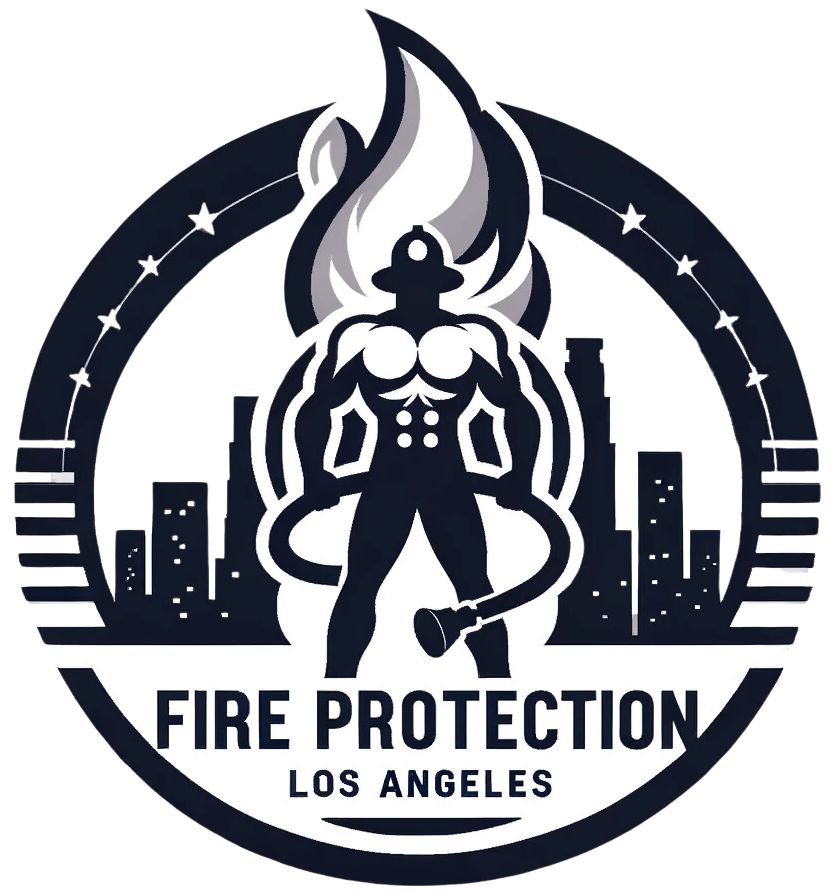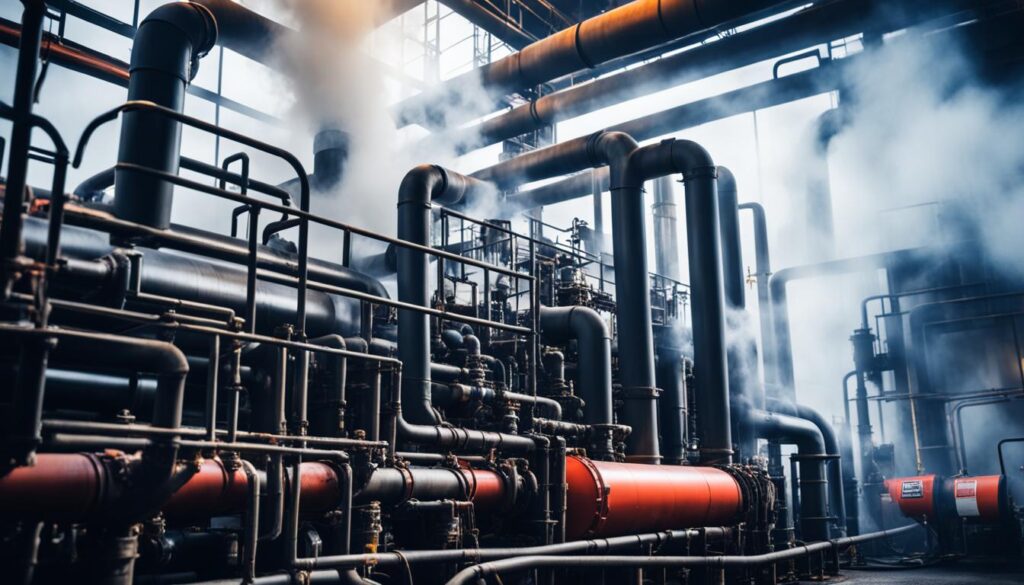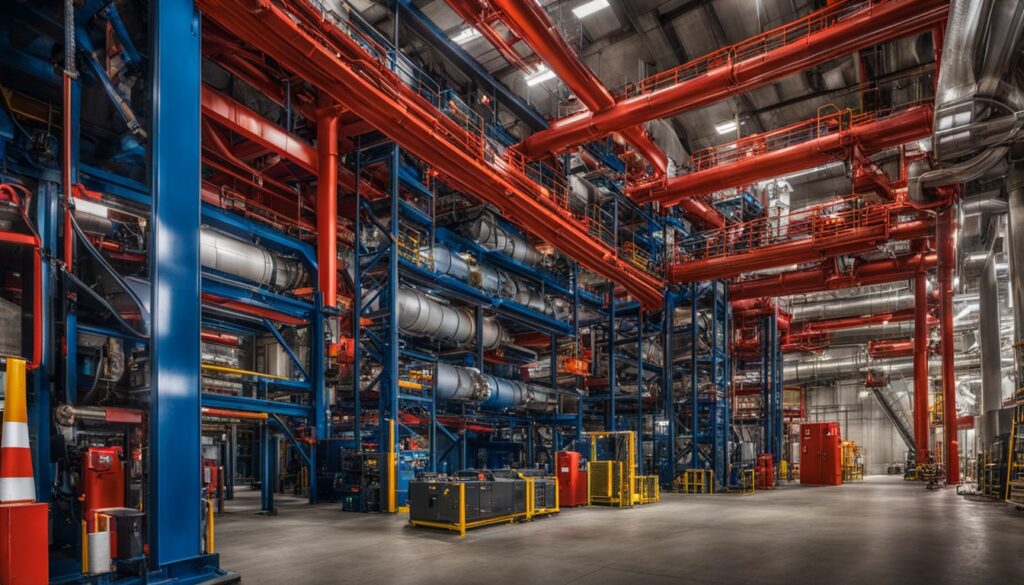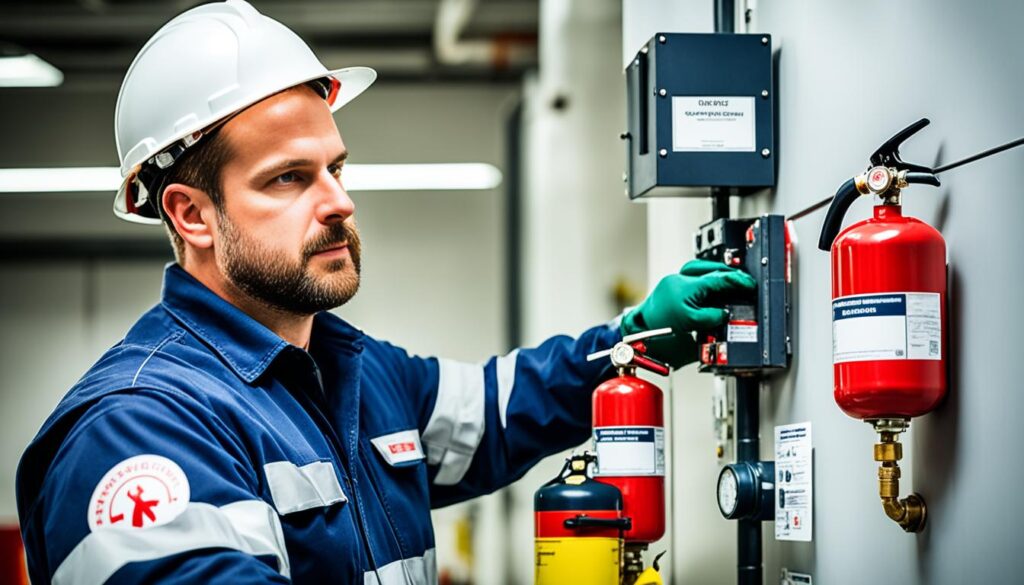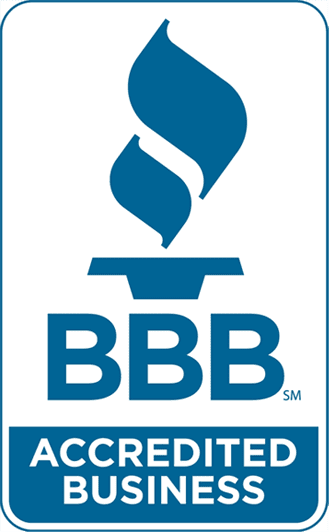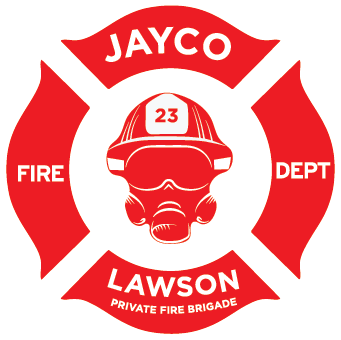Industrial places are very dangerous, with most relying on strict fire safety rules. These rules are key to prevent fires and keep people, buildings, and the economy safe.
The Fire Safety Standards for Industrial Facilities help protect against fire dangers. The National Fire Protection Association (NFPA) says following these rules lowers the risk of damage and harm. Fire systems like FM-200 and Novec 1230 are common in industries for their effectiveness.
The NFPA updates its industrial fire safety regulations often. It stresses the need for regular checks, from daily to once every five years. Real-time monitoring helps quickly spot and act on fire dangers.
The OSHA fire safety standards focus on safety in many ways. This includes training workers and having emergency plans. These rules help make a safe work environment.
Different areas in the U.S. use one of three main building codes. These codes change yearly to keep up with new safety info and tech. The goal is to make a standard where worker and asset safety is always a top priority.
Facilities need to quickly add fire protection systems that go beyond just meeting rules. These systems should show a strong commitment to keeping everyone safe. This guide will help you understand fire safety in industrial settings, focusing on being alert and ready.
OSHA’s Role in Industrial Fire Safety Compliance
The Occupational Safety and Health Administration (OSHA) is key in making fire safety compliance for factories and other places. Following OSHA guidelines for fire protection is important. It helps lower risks and keeps people safe.
Every day, an average of 14 people die at work in the U.S. This shows why we need strong workplace safety standards. It pushes industrial places to use good fire protection systems that fit their needs.
Understanding OSHA Fire Protection Standards for the Workplace
OSHA’s rules help businesses use strong industrial fire prevention measures. This is especially true for places with lots of flammable stuff. They need good fire suppression systems.
Rules say every workplace, especially those with dangerous chemicals, must have a system to find and stop fires fast. This is to follow fire safety compliance.
Categories of Fire Safety Regulations Applicable to All Industries
- Emergency evacuation planning: Every industrial place must have an evacuation plan. All paths should go outside or to a safe spot.
- Fire suppression systems: Places with important equipment or dangerous stuff should have top-notch systems to stop and put out fires fast.
- Maintenance of safety equipment: It’s important to check and keep fire safety gear in good shape. This makes sure it works when you need it.
Specifics of Evacuation Route Requirements and Fire Prevention Strategies
For better emergency evacuation planning, OSHA says there should be at least two ways to leave. These paths must be clear and easy to see to help people get out fast.
Also, having a fire prevention plan is key. This means keeping things clean, getting rid of flammable trash, and keeping equipment that gets hot in check. These steps help lower the chance of a fire.
By using these industrial facility fire evacuation procedures and safety steps, companies follow OSHA’s strict rules. This makes their workers and places safer and more secure.
Fire Safety Standards for Industrial Facilities
Keeping industrial places safe from fire is very important. They have lots of flammable stuff and complex machines. Using fire protection systems for manufacturing plants helps a lot. We’ll talk about important rules and training to make things safer.
At the heart of industrial fire safety is making and following fire prevention plans. These plans use the latest tech and methods to keep people and things safe. Also, industrial fire safety training programs teach workers how to handle fires. This makes the workplace safer and more ready for emergencies.
- Combustion, Electrical, and Chemical Fires: These are the main fires industries face. Each one needs its own way to prevent and put out fires.
- Specialized Fire Suppression Systems: Plants use systems like clean agents (FM-200, INERGEN, Novec 1230). These systems put out fires without harming equipment or leaving bad stuff behind.
- Routine Inspections and Maintenance: It’s key to check fire suppression systems often. This means looking at alarms, extinguishers, and hoses to make sure they work right.
- Emergency and Evacuation Protocols: Having clear plans for emergencies and evacuation paths is vital. Doing drills helps workers get ready for real fires.
- Regulatory Compliance: Following NFPA codes, OSHA rules, and local laws keeps workers safe and makes sure the plant follows the law.
High fire safety standards protect a plant’s assets and people. Industrial fire safety training programs and strong fire protection systems for manufacturing plants are key to this. Keeping training up to date and improving fire systems helps lower risks.
Implementing NFPA Recommendations for Optimal Fire Protection
Keeping industrial operations safe is key. This means following NFPA standards and using special fire protection systems. These steps protect people and property. They also meet legal requirements and lower risks in high-risk areas.
Identifying the Need for Specialized Fire Protection Systems in Various Industrial Applications
Many industries need strong fire safety steps. This includes places like factories and plants that work with dangerous materials. They need special fire systems made just for their risks. NFPA standards help design these systems to keep workers and operations safe.
For example, places with flammable materials use special fire systems. These systems put out fires without harming equipment or processes. NFPA guides on fire safety help pick the best systems for each situation.
Exploring NFPA’s Codes and Standards for Industrial Fire Safety Systems
NFPA has over 300 rules to lower fire risks. These rules cover building safety, electrical work, and handling dangerous materials. Following these rules keeps operations safe and running smoothly.
Not following these rules can lead to big problems like legal trouble and business stoppage. NFPA’s detailed advice helps make fire safety systems that work well and save money. This is true even for old buildings needing new safety updates.
Best Practices for Regular Inspection, Testing, and Maintenance of Fire Safety Equipment
Fire systems work best with regular care. This means following NFPA rules for checks and tests. Facilities must inspect and test their systems often to keep them ready for emergencies.
- Daily checks for damage or wear.
- Monthly tests of alarms and detectors.
- Annual checks by experts of all system parts.
- Five-year tests of back-up systems and power supplies.
These steps keep systems ready, prevent disasters, and follow fire safety laws. Keeping records of all checks and tests is key to a good fire safety plan.
Conclusion
Industrial fires are becoming more common. This guide shows how important it is to follow fire safety rules. These rules come from OSHA and the NFPA.
Most industrial fires happen because of flammable materials, electrical problems, or not handling dust safely. We must act now to prevent these fires and keep people and operations safe.
Just following the rules isn’t enough. We also need good emergency plans, training for staff, and regular fire drills. This builds a safety culture in companies.
Fire safety is more than just following rules. It’s about being proactive, using new technology to watch for dangers, and training workers. This helps reduce fires and keeps businesses running smoothly.
In 2020, over 16,500 fires happened in offices and stores in the U.S. These fires caused $932 million in damage. Every year, over 5,000 people get hurt in workplace fires. This shows we need strong fire safety plans.
Fire safety is not just a one-time task. It’s a constant effort to keep workers safe, protect property, and keep businesses open.
